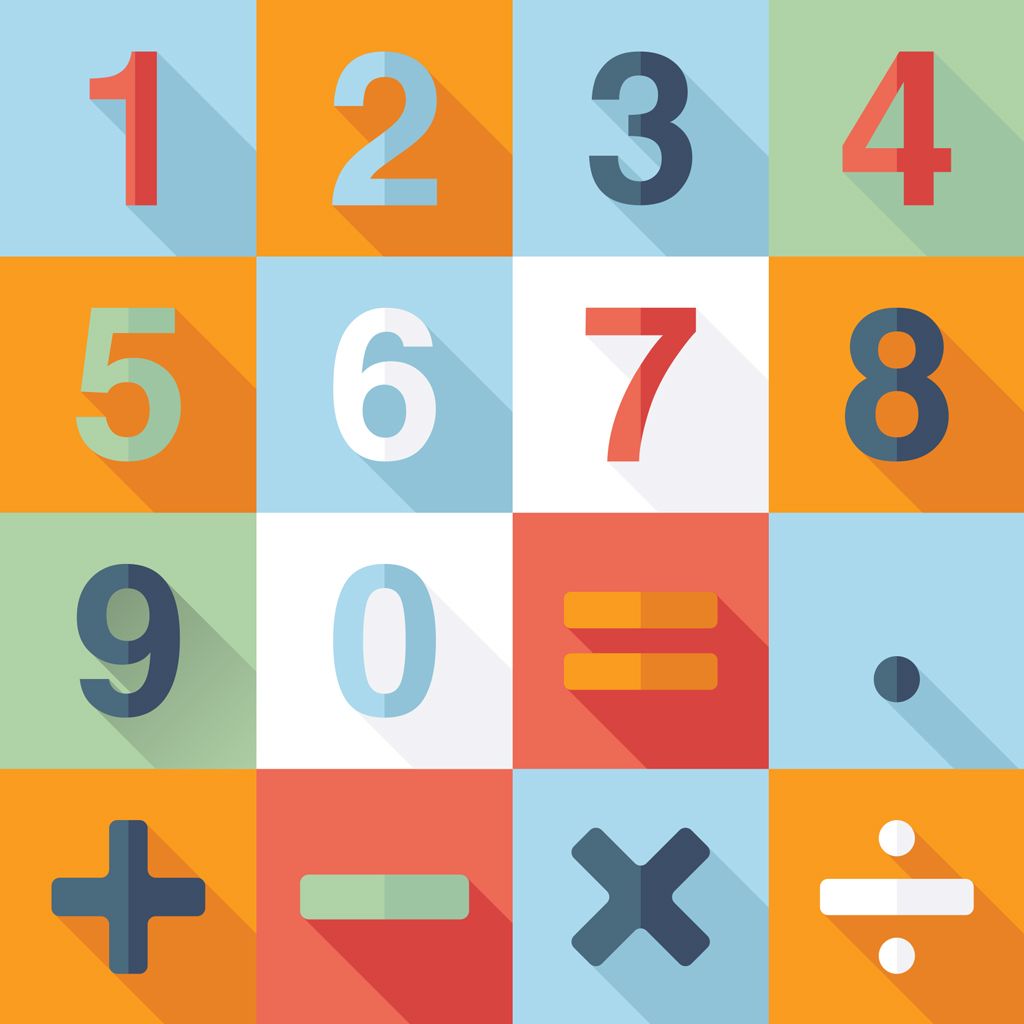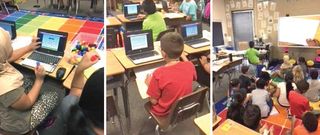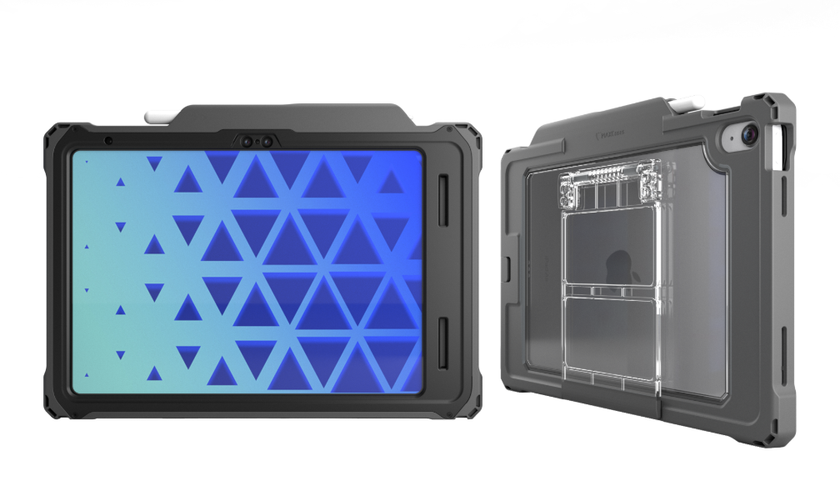New Math Tools and Best Practices Add Up to Positive Results
New research-based edtech tools and sound instructional practices are helping to equip students for success in math class and for future success in solving the world’s problems.

Visual models, multiple approaches, and an element of fun are important ingredients for building the strong foundation of conceptual understanding in math that’s a prerequisite for all further study. As all educators know, students who miss a building block at any point along the way will struggle until they somehow get back to filling in that skill. New research-based edtech tools and sound instructional practices are helping to equip students for success in math class and for future success in solving the world’s problems.
THE POWER OF “SEEING” MATH

Meagan Erwin teaches third grade at Gables Elementary in Columbus (OH) City Schools, a large urban district with a high ELL population. Part of the impetus to use more technology in the classroom, Erwin says, was the switch to online state testing in Ohio. “The kids need computer skills to show their math skills,” she says.
When the district received a grant to invest in edtech, they needed to find a meaningful and intuitive solution. “We have students from refugee camps and other parts of the world who have limited or no English and who have never touched a computer,” Erwin says. They chose ST (Spatial-Temporal) Math, developed by MIND Research Institute, which features an engaging platform with simple graphics. The uncluttered screen, Erwin says, frees the students’ brains to focus on math.
When Erwin saw what the students were doing in lab time one day, she put the puzzle on the smartboard so they could solve it together as a class. “It changed the way I taught,” she says. “It’s a visual way of looking at math. It’s engaging and hits different skills and learning styles.” Her students use blocks, counters, paper and pencil, and their classmates in the processes of problem solving as well.
MANY PATHS TO ONE ANSWER
Erwin also uses Number Talks, from the book by Sherry Parrish, to help students practice solving mental problems. “They’re learning that there are lots of ways to solve a problem,” Erwin says. “There may be only one answer, but there are different ways to get there.” Developing these critical thinking skills and conceptual understanding are especially helpful for third graders as they begin to look at concepts like fractions.
In addition to building conceptual understanding through visuals, ST Math harnesses the power of a character—and children’s love for animals. As JiJi the penguin rides a unicycle of shaded circles, and parts of circles, across the number line, for example, the circles stretch across the number line and students who have been struggling to relate “fraction pies” to numbers experience an “aha” moment.
Erwin appreciates the flexibility to be able to move the program so that all students can work on a particular topic, after which it brings each student back to where they were as they work independently. She also has the ability to move students down a grade level for intervention or slide them into the next if they’re ready. ST Math records daily progress in terms of the time students spend on the program and the number of problems they solve. “It’s not competitive,” Erwin says, “but it’s motivating for them to see how hard they worked.”
BREAKING DOWN LANGUAGE BARRIERS
Although Erwin says the district is seeing a strong correlation between students using ST Math and higher MAP scores, part of its value is making bridges for students between what they’re learning and the questions they’ll see on online tests, which offer no context. Even for students who are comfortable with technology, the switch from pencil and paper to online testing requires some adjustment. Third graders tend to click through online tests, so she encourages them to use thinking paper, their hundreds charts, and other tools so that they’re working to find the answers.
One of the things Erwin loves best about ST Math, though, is that there are no written directions and very few words. Students get on to the program and follow it intuitively. While this is helpful for all students, it’s particularly powerful for students who struggle with reading and for ELLs.
Erwin gives the example of a little girl who arrived in her class from a refugee camp. She’d never been to school and hadn’t learned to read or write. “She latched onto ST Math,” Erwin says. “It was the only time she looked and acted like the other students. She learned and was engaged and it was the best 30 minutes of her day.” No one else knew what level she was on, and it didn’t matter. Today, she’s thriving in fourth grade.
CLOSING THE GAP

Farmington (MI) Public Schools is in a suburb of Detroit and serves a diverse population of over 10,000 students. At the middle-school level, the district had been supporting their certified special education students with co-teaching to work on their IEP goals, says teacher consultant Kim Marquette. While the students were passing math, they weren’t closing the skills gap or holding onto learning—and therefore they weren’t exiting from special ed.
Four years ago, the district formed a committee to consider other solutions. They chose TransMath from Voyager Sopris Learning because it aligns to the Common Core and has a computer practice component to supplement instruction. They also appreciated the embedded training that supports all teachers to be successful in teaching these foundational skills. “The data management features and the benchmarking tool are particularly helpful,” Marquette says, “as they enable us to track progress. Some nice tech features are built in as well, including videos, digital manipulatives, and a toolbox for teachers.”
PHENOMENAL GROWTH
After the first year of implementation, the district saw phenomenal growth, with over 80 percent of the students showing a year or more of growth. Part of that bump, Marquette says, was probably due to focused work on lagging skills in math prior to implementation, but each year since the district has continued to see about 50 percent of students exceed a year’s growth. “Middle-school students are difficult to assess,” Marquette says, “as their solid day-today classwork is not always reflected in their performance on high-stakes tests.”
Using TransMath, students continue to learn grade-level content while shoring up their basic skills. The goal is to move from concept to fluency to proficiency. “We’ve been able to decertify more kids than we ever have,” Marquette says, “and that’s exciting.” The school board is pleased with the results, and they’re also pleased with the high percentage of students using TransMath who are in the high growth quadrant on NWEA MAP testing.
This growth is accelerated by the fact that the kids are engaged, participating, and proud of their progress. One young man with a severe reading disability that impacts both his learning and confidence has grown in math year to year beyond expectations, Marquette says. His continued and sustained growth means that “he’ll be just fine in high school—if he’s not out of special ed entirely, at least he won’t need special ed assistance in math.”
NY HIGH-SCHOOL DISTRICT USES IPADS AND A GRAPHING CALCULATOR APP TO FOSTER DIGITAL EQUITY

At Sewanhaka (NY) Central High School District, over 250 students were able to use iPads for the first time to complete their Algebra I, Geometry, and Algebra II Regents New York State exam. A year-long partnership with Jamf, which manages over 9,500 iPads for the district, and GeoGebra, which makes a graphing calculator app that’s included on each iPad, made this initiative possible.
For the test, the iPads had to be locked into exam mode to restrict all iPad capacities beyond its graphing calculator functions. This was achieved by implementing Jamf’s Single App Mode feature, as well as additional restrictions to protect the integrity of the exam.
“Sewanhaka is always looking for ways to break down any barriers for our students and provie them with the best resources available for success,” says Brian Messinger, District Coordinator of Classroom Instructional Technology and Student Achievement. “Having students use the free GeoGebra Graphing Calculator app on their iPads in class, at home, and on high-stakes exams achieves these goals while promoting innovation. This project adds tremendous value to our iPads, which we provide to all students as part of our 1:1 program.”
Illustrative Mathematics Selects Kendall Hunt Publishing as Distributor of IM Certified Math Curriculum.
Illustrative Mathematics (IM), the author and developer of core mathematics curricula and professional learning resources, announced it is partnering with Kendall Hunt Publishing Company to be its exclusive distributor of its freely available IM Certified digital curriculum.
Kendall Hunt customers will have access to the problem-based core IM 6–8 Math as an open educational resource, along with the soon-to-be-released IM curriculum for high school including Algebra 1, Geometry, and Algebra 2 math courses. In addition, Kendall Hunt will offer print copies of the curriculum and IM Certified professional learning.
The designation of “IM Certified” ensures the curriculum includes the latest updates and enhancements and is aligned to IM’s philosophy, mission, and standards, and the professional learning content is developed by IM’s expert-led authoring team and delivered by IM Certified Math Coaches.
AUSTIN INDEPENDENT SCHOOL DISTRICT ADOPTS DREAMBOX LEARNING® ADAPTIVE MATH PLATFORM
DreamBox Learning® has announced a five-year agreement with the Austin Independent School District to deliver its adaptive online K–8 math platform to every elementary and middle school in the district. The partnership means that thousands of students across 83 elementary and 18 middle schools will have access to software that adapts to their ability and comprehension in real time, both during and between lessons. For teachers, DreamBox provides ways to personalize lessons, monitor student growth, and receive job-embedded professional development.
Austin ISD completed a six-month pilot of DreamBox before deciding to implement the platform across the district. Results from the pilot showed that students who completed an average of 153 lessons over 19 weeks experienced 82 percent growth. These results are in line with an earlier study from Harvard University conducted by the Center for Education Policy Research (CEPR) that demonstrated students who spent more time on DreamBox saw larger gains in achievement.
DreamBox offers lessons in both English and Spanish and the ability to switch easily between them.
MATH SITES AND APPS
By David Kapuler
Mobile learning and BYOD are making it easier for students to learn, especially in math. Following is an alphabetical list of some favorite sites and apps to engage students in learning:
4 Dice: Fraction Games—A great iOS app for learning how to add, subtract, multiply, and divide fractions. This game meets Common Core Standards and has Bluetooth capabilities to allow for two players across multiple devices.
5 Dice: Order of Operations Game—A neat iOS app for practicing “order of operations.” The answer is given, and students need to figure out the equation. Some nice features include the email option for teachers to track students’ ability as well as a nice interactive whiteboard to help figure out the problem.
ABCYA—A wonderful site and apps (grades K–5) for math, reading, and more.
AplusMath—A nice site for math games, worksheets, and flashcards.
BuzzMath Middle School—A fantastic iPad app for middle-school students who want to learn and practice math skills. When students get an answer wrong, BuzzMath shows them the correct answer and how to solve it. The app also supports “differentiated instruction” and has a website with a teacher portal for managing and tracking students.
ClassPad—A new free online math tool that creates a digital scratch board to solve any math problem.
Cookie—A great site with lots of educational games, including math games, for elementary-school students.
DimensionU—This is one of my favorite sites for K–12 for developing math skills in all areas. This site uses cutting-edge technology to reinforce math skills in 3D games in safe, competitive environments.
DragonBox—An excellent multi-platform site for teaching students Algebra in a fun and unique way. It starts out using pictures instead of numbers.
Education Galaxy—An innovative online platform for grades K–6 that helps students achieve success in core subjects, including math.
Fiete Math Climber—A nice iOS game that helps students with basic math skills such as addition, subtraction, and more.
Funbrain—One of the most popular educational gaming sites on the Web.
Grid Lines: Ordered Pair Game—Grid Lines is a unique and challenging game which has students plot order pairs/points on a four-quadrant grid. This is great for upper-elementary and middle-school students and has Bluetooth capability for multiplayer mode.
iKnowIt—A new site that’s quickly becoming one of my favorites for interactive math problems for grades K–5.
IXL—One of the most popular sites for math for grades K–8 as well as for learning Algebra and Geometry. Not only does this site have an educational portal for student tracking and reporting, but it has tons of lessons to choose from as well.
Kidz Page—A nice site with lots of fun educational math games.
King of Math—An interesting iOS game for middle-school math. Students answer questions and puzzles to level up their character.
King of Math Defense—A wonderful math strategy game for basic math skills for grades K–8. Students defend a castle against monsters.
Learning Games for Kids—A great site with lots of games for education.
Lure of the Labyrinth—On this site designed for pre-Algebra students, they go on an amazing adventure to rescue their lost pet and avoid monsters. Not only does this app have a wide variety of lessons for middle-school students, but it’s also aligned to state standards.
Fuel the Brain—A nice site with lots of different educational math games to choose from.
Marble Math—This is a great iOS app that has students playing the old-fashioned marble tilt puzzle game to solve basic math problems (addition, subtraction, etc.) plus decimals and fractions. Users can either tilt their iOS device to move the marble or use their finger to guide their marble to the desired spot. Not only is this game highly addictive, but it’s also rather challenging in the upper levels.
Math A Tube—A great resource for math students and teachers for all areas of math. There are videos and worksheets in addition to explanations of all sorts of math concepts (e.g., Geometry, decimals, fractions, etc.).
Math and Sorcery—One of my favorite iOS games for learning basic math skills playing an old-school 8-Bit-style RPG.
Math Castle—A super-fun iOS game for basic math skills that has players defend a castle from a dragon by answering equations.
Math Champ—An innovative iOS app that turns a student’s iPad into a “buzzer” to answer questions before their classmate does. It does require a teacher to “host” the game and set up a class list. Math Chimp supplies all the Common Core State Standard questions from a wide variety of math problems.
Math Game Time—A terrific site for grades K–7 with lots of educational games, worksheets, and videos.
Math is Fun—A cool site for all things math, for grades K–12. It has more than just equations to solve.
Math Leaper—A fun iOS game with detailed reporting that has students jumping higher and higher while learning basic math skills (grades pre-K–8).
Math Minute Madness—A wonderful iOS app that focuses on basic math skills and has students trying to solve as many questions in a minute as they can to earn stars so they can add animals to their virtual zoo.
Math Playground—A great site for finding math resources such as word problems, games, worksheets, flashcards, and more.
Math Rescue—A fun iOS game that has students learning concepts of rounding and estimation while putting out fires.
Math Run: Panda Chase—A nice iOS game for learning basic math skills, for grades K–5, following the popular “running” mobile platform style.
MathEdge—An excellent iOS app for young learners working on their addition and subtraction skills through the use of flashcards.
Milestone Math—An interesting iOS app that uses self-paced learning to help students with their math skills.
Money Math Duel—A fun iOS game for helping students with math and learning how to make change.
Mystery Math Town—This is one of my favorite unique iOS apps for building math skills. Ideally, this adventure is for kids 6–12 and focuses on addition, subtraction, multiplication, and division. Students enter a town and try to unlock levels and characters by not only solving equations but also by finding the variables to solve the given equation. This game is highly addictive and has very high replay value.
Numbers League—A fantastic iPad app for students ages 5 and up that uses basic math skills to defeat a legion of evil superheroes. This interactive, comic-style game focuses on Common Core State Standards and can be used by students of all ages as the levels get progressively more difficult. Operation Math—This is a fun iPad app that focuses on basic math skills. Users try to stop an evil villain from stealing numbers by solving equations and locking his escape route. OM is a great game for kids ages 5–12 with high replay value that takes them to lots of geographic locations.
Ordered Fractions—A fun iOS game that uses dice to roll random numbers and then has students put them in boxes to create fractions. Students have to compare these fractions to put them into ascending order.
Play Kids Games—A nice site with lots of fun and engaging math games.
Polyup—A new free site that uses game-based learning to help students in grades 3–12 with math.
Prodigy—An excellent innovative math game for grades K–8 with real-time reporting.
PurposeGames—A nice little site for educational games on a wide variety of subjects. Teachers can create their own games too.
RoomRecess—A wonderful site for elementary students to learn basic math concepts through a wide variety of educational games.
Sakura Quick Math—This is an ideal iOS app for grades 1–5 that focuses on all basic math skills. Not only does Sakura track students’ progress, but it also allows users to write answers directly on the iOS screen.
Skip Math: Skip Counting Games—A fun iOS app similar to Doodle Jump, where students jump from platform to platform to count by numbers (e.g., 2, 4, 6, 8, etc.). Another neat feature is the ability to take a picture of yourself and put it on the game character.
Sushi Monster—A nice iOS app for practicing addition and multiplication facts.
YodelOh Math Mountain—A super-fun iOS app that focuses on basic math skills like addition, multiplication, subtraction, and division. This game is a hoot and reminds me a lot of The Price Is Right game where the mountain climber tries to reach the top of the mountain before time runs out.
Zapzapmath—An excellent site for math for grades K–6, with an educational portal for tracking student progress and generating detailed reports.
Tech & Learning Newsletter
Tools and ideas to transform education. Sign up below.













